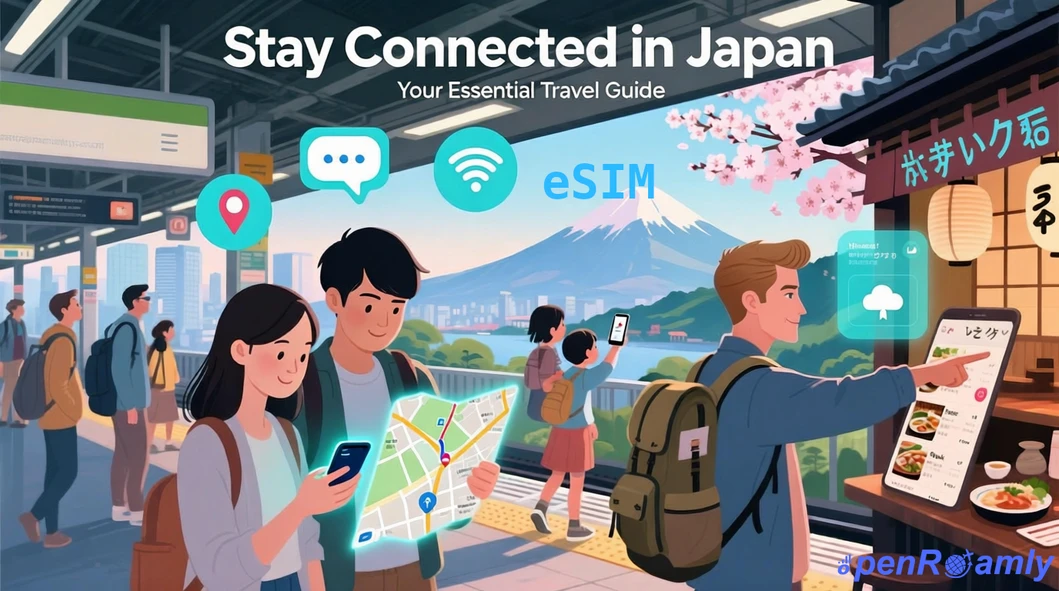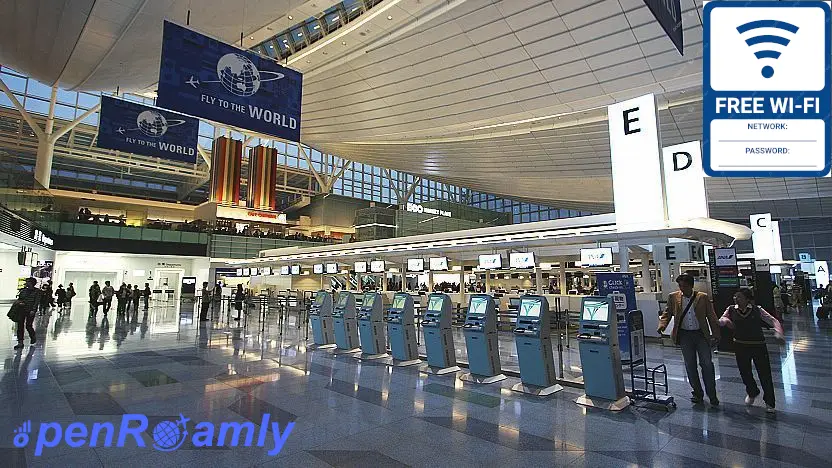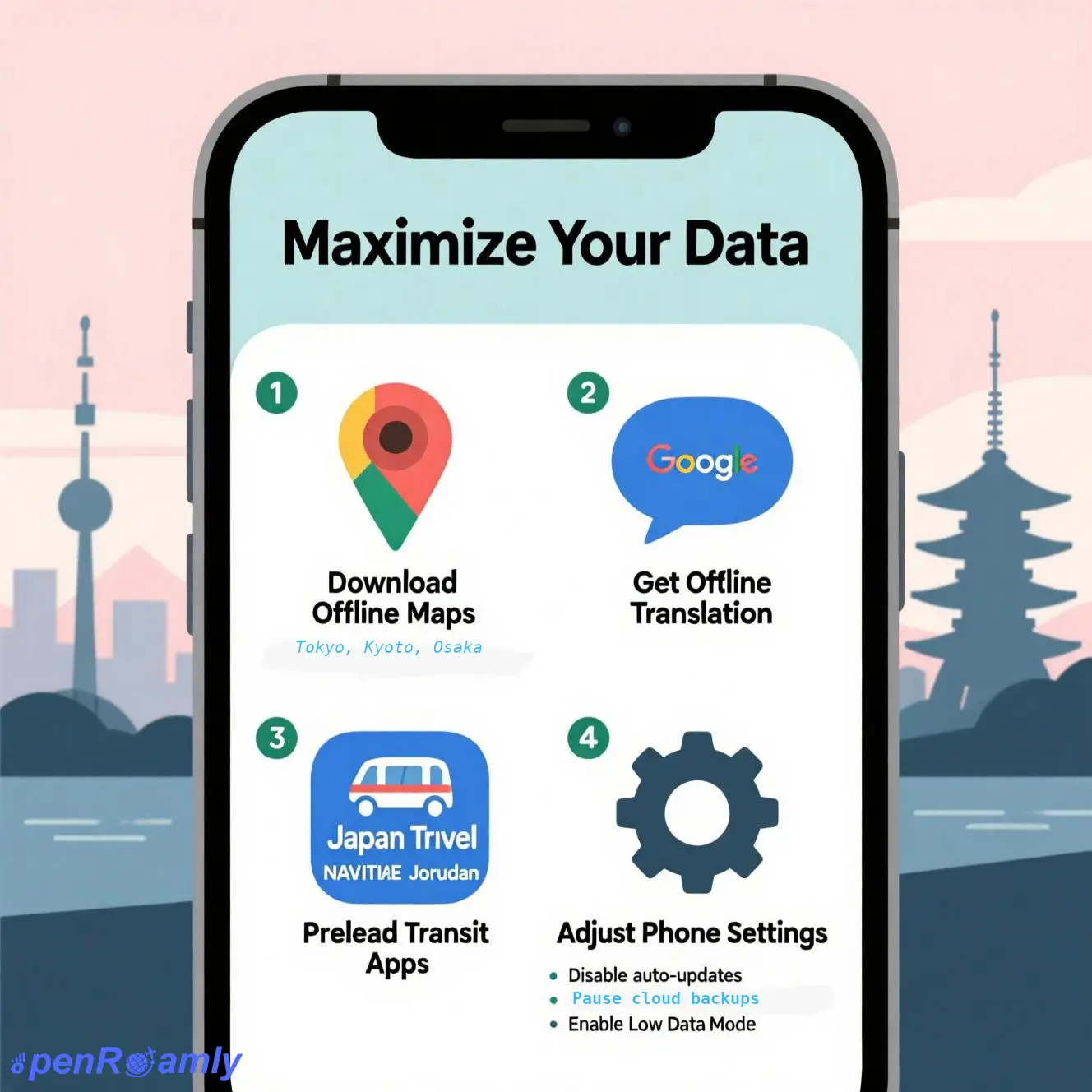The Ultimate Guide to Staying Connected in Japan: eSIM, Wi-Fi & More

Planning your dream trip to Japan? From navigating Tokyo's bustling subways to translating a menu in a Kyoto izakaya, reliable internet access is no longer a luxury—it's an essential travel tool. It's your key to real-time navigation, instant translations, last-minute bookings, and sharing your amazing experiences with the world.
This comprehensive guide breaks down Japan’s connectivity landscape, weighs the pros and cons of popular internet solutions, and helps you choose the perfect data plan for your trip.

Can You Rely on Free Wi-Fi in Japan?
Japan offers numerous free Wi-Fi hotspots, but relying on them as your primary connection can be a challenge.
Airports: Major international airports like Narita (NRT), Haneda (HND), and Kansai (KIX) provide reliable free Wi-Fi, perfect for when you first land.
Hotels & Ryokans: Most modern hotels include complimentary in-room Wi-Fi. However, traditional inns (ryokan) might have limited coverage or even charge a fee.
Public Spaces: You'll find hotspots at major train stations, many convenience stores (like 7-Eleven and FamilyMart), and coffee chains like Starbucks.
The Reality of Free Wi-Fi:
While useful for quick checks, free Wi-Fi has significant drawbacks for travelers on the move:
Inconsistent Coverage: Connections drop the moment you walk out of range, leaving you stranded without maps.
Cumbersome Logins: Many networks require a multi-step registration process via email or social media for each new session.
Security Risks: Public networks are unsecured, making them risky for sensitive activities like banking.
Slow Speeds: Popular hotspots are often congested, leading to frustratingly slow performance.
Verdict: Free Wi-Fi is a great supplement, but it’s not dependable enough to be your only source of internet in Japan.

Your 4 Main Options for Internet in Japan: A Comparison
When it comes to paid, reliable internet, travelers have four main choices. Here’s how they stack up.
Option | Convenience | Cost | Setup | Best For |
|---|---|---|---|---|
eSIM | ⭐⭐⭐⭐⭐ (Excellent) | $$ (Affordable) | Instant digital setup via QR code. | Solo travelers, tech-savvy users, convenience seekers. |
Pocket Wi-Fi | ⭐⭐⭐ (Good) | $$$ (Moderate) | Pick up/drop off at airport or hotel. | Groups, families, or those with multiple devices. |
Physical SIM | ⭐⭐ (Fair) | $$ (Affordable) | Must find a store and swap your SIM card. | Travelers with older, non-eSIM phones. |
Int'l Roaming | ⭐ (Poor) | $$$$$ (Very Expensive) | Automatic but a huge bill risk. | Emergencies only. Not recommended. |
A Closer Look at Each Option
International Roaming: Using your home carrier’s roaming plan is the easiest but by far the most expensive option. Costs can spiral quickly, making it unsuitable for anything beyond a brief emergency call.
Pocket Wi-Fi: These portable hotspots provide unlimited data and can connect multiple devices (usually 3-5). However, you have to carry and charge an extra gadget all day, and you risk fees if it's lost or damaged. The logistics of pickup and return can also be a hassle.
Physical Japanese SIM Card: Available at airport kiosks, these require you to physically swap out your home SIM card. This means you can't receive calls or texts on your regular number, and you risk losing your tiny home SIM.
eSIM (Embedded SIM): The most modern and seamless solution. An eSIM is a digital SIM you install on your phone by scanning a QR code before you leave home. You connect to the local network automatically upon arrival, keep your home number active for calls and texts, and never have to worry about a physical card. The only prerequisite is an eSIM-compatible phone (most models from 2019 onwards).
How to Save Mobile Data and Stay Connected Smartly
No matter which plan you choose, a little preparation goes a long way in stretching your data allowance.
Download Offline Maps: Before your trip, use Google Maps or MAPS.ME to download maps of Tokyo, Kyoto, Osaka, and other cities you'll visit. Navigation will work perfectly even without a connection.
Get Offline Translation: Download the Japanese language pack in the Google Translate app. This allows for instant text and camera translation without using data.
Pre-load Your Transit Apps: Apps like Japan Travel by NAVITIME or Jorudan work offline for train route planning if you pre-load the data.
Adjust Your Phone Settings:
Turn off auto-updates for apps in the App Store or Google Play.
Pause cloud backups for photos (iCloud/Google Photos) until you're on Wi-Fi.
Enable "Low Data Mode" to restrict background app activity.

Choosing the Best Japan eSIM for Your Trip: 5 Traveler Profiles
The ideal eSIM plan depends entirely on your travel style. Here are five common scenarios to help you decide.
1. The Light User: Maps & Messaging Only
Profile: You primarily use your phone for Google Maps, WhatsApp, and occasional searches. You rely on hotel Wi-Fi for heavier tasks.
Recommendation: A plan with 500MB to 1GB per day is cost-effective and provides more than enough data for essential navigation and communication.
2. The Standard Sightseer: Daily Social Sharing
Profile: You’re out all day, using maps constantly, uploading photos to Instagram, looking up restaurant reviews, and using translation apps.
Recommendation: A 1GB to 2GB per day plan offers a comfortable buffer, ensuring you never run out of data mid-adventure.
3. The Content Creator: Constant Uploads & Streaming
Profile: You're vlogging, live-streaming, uploading high-resolution photos and videos, and taking frequent video calls.
Recommendation: Look for larger data packages, such as a 20GB/15-day plan or a high-speed unlimited plan. Always check the fine print on "unlimited" plans for throttling policies.
4. The Business Traveler: Always-On Productivity
Profile: You need a rock-solid connection for video conferences, sending large files, and staying connected to the office, in addition to personal use.
Recommendation: A premium high-speed unlimited plan or a large fixed-data bundle (30GB+) is essential for professional reliability.
5. The "Peace of Mind" Traveler: Set It & Forget It
Profile: You don't want to worry about tracking data usage. You just want your internet to work seamlessly for whatever you need, whenever you need it.
Recommendation: A clearly defined high-speed unlimited eSIM is your best bet. Alternatively, AI-powered tools from providers like OpenRoamly can recommend a perfect-fit plan based on your trip duration and activities, removing the guesswork.
Final Thoughts
A reliable internet connection is the key to a smooth, stress-free, and enriched travel experience in Japan. While free Wi-Fi has its place, a dedicated solution like an eSIM offers unparalleled convenience and reliability. By planning ahead and choosing a data plan that matches your needs, you can spend less time worrying about connectivity and more time immersing yourself in the incredible wonders of Japan.
Ready to travel with seamless connectivity? Find your perfect Japan eSIM at OpenRoamly Japan. Enjoy instant activation, transparent pricing, and 24/7 support for a worry-free trip.